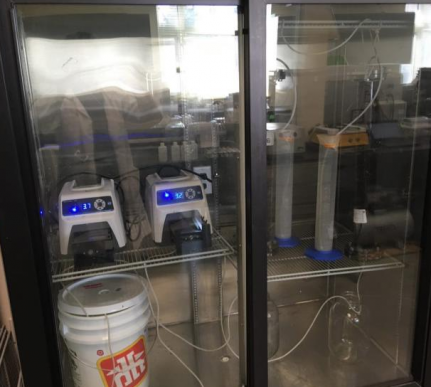
A major environmental concern of the mining industry is the management of heap leach solution as a waste product of gold extraction. Both industry and regulators increasingly look to passive bioremediation technology to treat mine waste in order to avoid introducing new chemical parameters of concerns used in common active treatments, as well as to avoid financial burdens that often must be done in perpetuity. While bioremediation techniques have been used with varying degrees of success throughout the mining industry, there is still little known of the efficacy of these methods within a cold climate context.
This bench-scale study focused on the efficacy of a permeable reactive barrier (PRB) made up of locally sourced gravel, with organic matter and zero valent iron (ZVI) amendments for the removal of arsenic (V) and nitrate under cold weather conditions. Through the use of vertical Plexiglas columns, synthetic heap leach wastewater was treated via PRB. The conditions within this PRB environment, are favourable to the cultivation of denitrifying bacteria thus allowing for the removal of nitrate. The electrochemical characteristics of ZVI allow for adsorption and subsequent sequestration of arsenic.